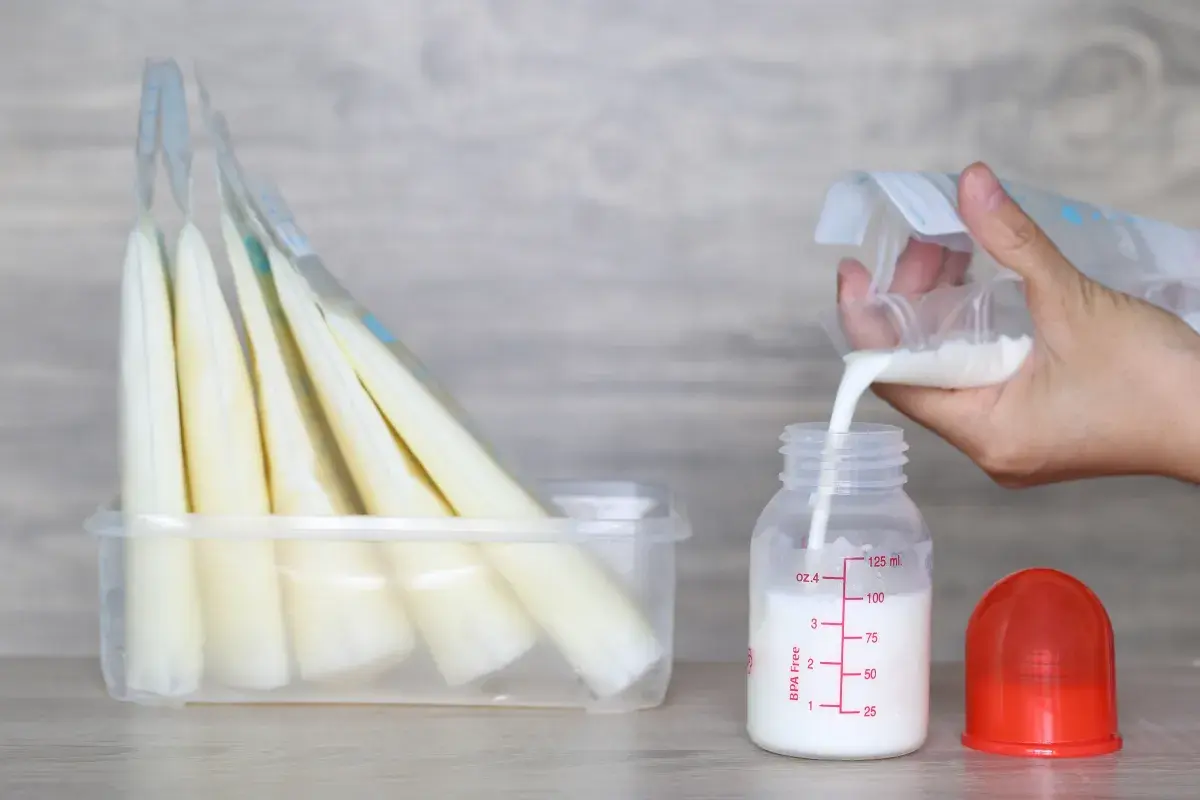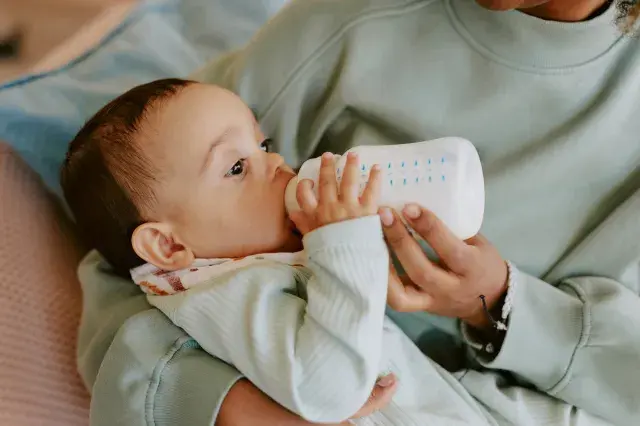
Many woman across America are sharing breast milk informally, suggesting that more support for mothers may be needed.
Factors contributing to the practice likely include limited paid parental leave, inadequate breastfeeding support and not enough systems for parents to safely access mother’s own milk alternatives, according to researchers from the University of Pittsburgh and the RAND Corporation.
In a large, diverse sample of first-time mothers in the U.S., 1 in 27 participants reported feeding their infants shared human milk.
The researchers also hightlight previous work indicaing that families engage in many, but not all, recommended milk sharing risk mitigation measures and fear disclosing their milk sharing to medical practitioners.
“With informal human milk sharing we are typically referring to parent-to-parent exchange of milk, from one parent who has excess milk to share to another who doesn’t have enough or any to provide their child,” study author professor Jill R. Demirci of Pittsburgh’s School of Nursing told Newsweek.
She added: “It could also mean a mom/parent directly nursing another child who is not their own,”
Data were drawn from a randomized clinical trial of telelactation (a virtual service that connects breastfeeding mothers with lactation consultants) that recruited pregnant women—at between 33–37 weeks at the time of the trial, who had not given birth before and intended to breastfeed—from across 39 U.S. states from July 2021 to December 2022.
At 24 weeks postpartum, participants were asked whether they ever fed their infant donor breast milk from a milk bank (pasteurized donor human milk, or “PDHM” for short), breast milk from a milk sharing network and/or breast milk from friends or family. The latter two categories were collapsed into “shared milk.”
Of the subjects, 9.4 percent reported feeding their infant donor or shared milk. The most common source was PDHM, (at 6.1 percent), followed by shared milk (3.7 percent), including using milk from friends or family (2.7 percent), milk-sharing networks (0.9 percent) and other sources (0.3 percent). Ten participants (0.5%) used both PDHM and shared milk.
Donor or shared milk use data were available for 1909 of 2108 enrolled participants, with an average maternal age of 29.6.
Participants were demographically diverse with few differences observed between users and non-users of shared milk, including across racial groups and Hispanic/non-Hispanic participants, according to the researchers. The team noted that shared milk use was more likely among uninsured participants.
PDHM and shared milk users had the strongest beliefs about meeting breastfeeding goals, however these participants were more likely to feel unsuccessful at breastfeeding and used infant formula at comparable rates with nonusers, despite assumptions donor milk reduces formula use.
With this in mind, lactation support remains critical, even when alternate sources of human milk are available, the team emphasized.
Demirci explained informally sharing milk can be “controversial” because parents are typically sharing fresh or frozen expressed milk without the checks and balances of a milk bank, which does donor screening and pasteurizes milk (but milk from a milk bank is typically only available for premature or critically ill infants).
“The primary risks we consider with milk sharing relate to medications, substances or maternal health conditions that could be transmitted through milk, as well as unsanitary expression practices or improper storage,” she said.
“However, it’s worth noting that informal, non-commercial milk sharing (which anecdotally seems to be the most common type) has not been associated with significant documented risk to date. A likely reason is that donors are typically feeding the same milk to their own infants, and therefore have a natural motivation to use safe expression and storage practices.
“And because these exchanges are not financially incentivized, there is no motivation to dilute or alter the milk in any way that could be dangerous for a baby.”

When a parent’s own milk is not available, it seems families are choosing between shared human milk and commercial infant formula.
“The conversation needs to be about relative risk, rather than treating milk sharing as risky in isolation. Milk sharing is not entirely risk-free, but neither is formula feeding, as seen recently with formula recalls and supply shortages. And importantly, human milk provides immune and bioactive protections that formula cannot replicate,” said Demirci.
Primarily parents are generally “very aware” of the benefits of human milk and desire to breastfeed.
“However, the support structures to do so are quite limited, including lack of or limited paid parental leave, clinicians who are poorly trained to provide breastfeeding support and poor reimbursement structures for dedicated lactation support from experts,” added Demirci.
There are also a number of reliable social media sites for exchange of human milk that make connecting with donors and recipients easy.
While this study did not measure a fear of disclosing the practice, Demirci said that “milk sharing may feel stigmatized because it hasn’t been well supported by major health organizations in the past and use of infant formula as the primary infant feeding alternative to mother’s own milk is very normalized and common in our society.
“It’s important for pediatric providers to maintain open, nonjudgmental communication around infant feeding so that parents feel safe disclosing these practices and pediatric providers can help offer practical risk-reduction guidance for families who choose to use shared milk.”
Demirci emphasized their goal to make clinicians aware this is happening in the first place and that they should be knowledgeable about the practice and current recommendations from organizations like American Academy of Nursing and the Academy of Breastfeeding Medicine.
“I also think it’s a call to action to create more accessible systems for parents to safely access mother’s own milk alternatives.”
The authors acknowledge study limitations include data that was self-reported and not drawn from a nationally representative source; no assessment of motives, volume or timing of donor or shared milk use; and it being hard to define this as an official trend with their analysis the first to look at it on a more national level across different demographic groups.
Do you have a tip on a health story that Newsweek should be covering? Do you have a question about milk sharing? Let us know via health@newsweek.com.
Reference
Demirci, J. R., Waymouth, M., Ray, K. N., James, K. F., & Uscher-Pines, L. (2025). Informal Human Milk Sharing Among US Mothers. JAMA Network Open, 8(11). https://doi.org/10.1001/jamanetworkopen.2025.42036
Palmquist, A. E. L., Perrin, M. T., Cassar-Uhl, D., Gribble, K. D., Bond, A. B., & Cassidy, T. (2019). Current Trends in Research on Human Milk Exchange for Infant Feeding. Journal of Human Lactation, 35(3), 453–477. https://doi.org/10.1177/0890334419850820
Tomori, C., Palmquist, A. E. L., & Dowling, S. (2016). Contested moral landscapes: Negotiating breastfeeding stigma in breastmilk sharing, nighttime breastfeeding, and long-term breastfeeding in the U.S. and the U.K. Social Science & Medicine, 168, 178–185. https://doi.org/10.1016/j.socscimed.2016.09.014
